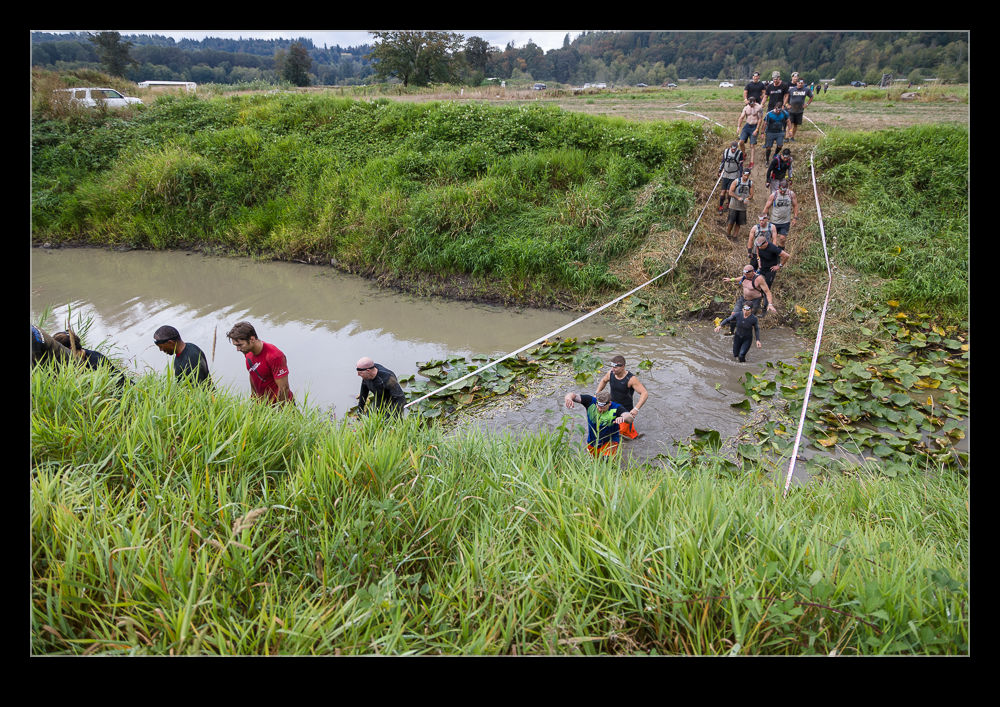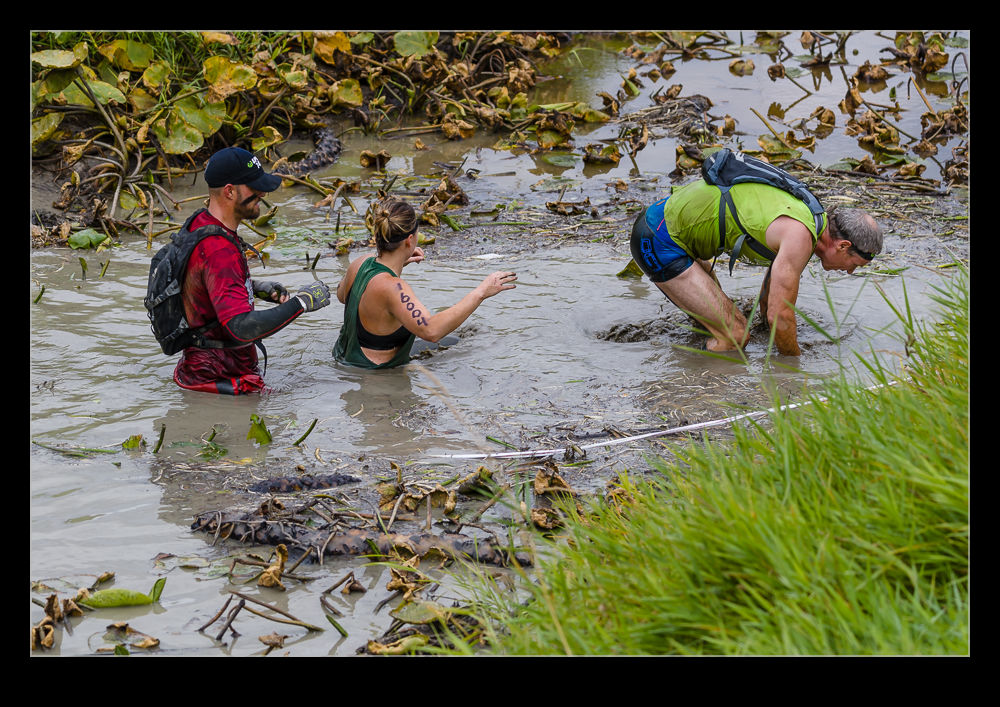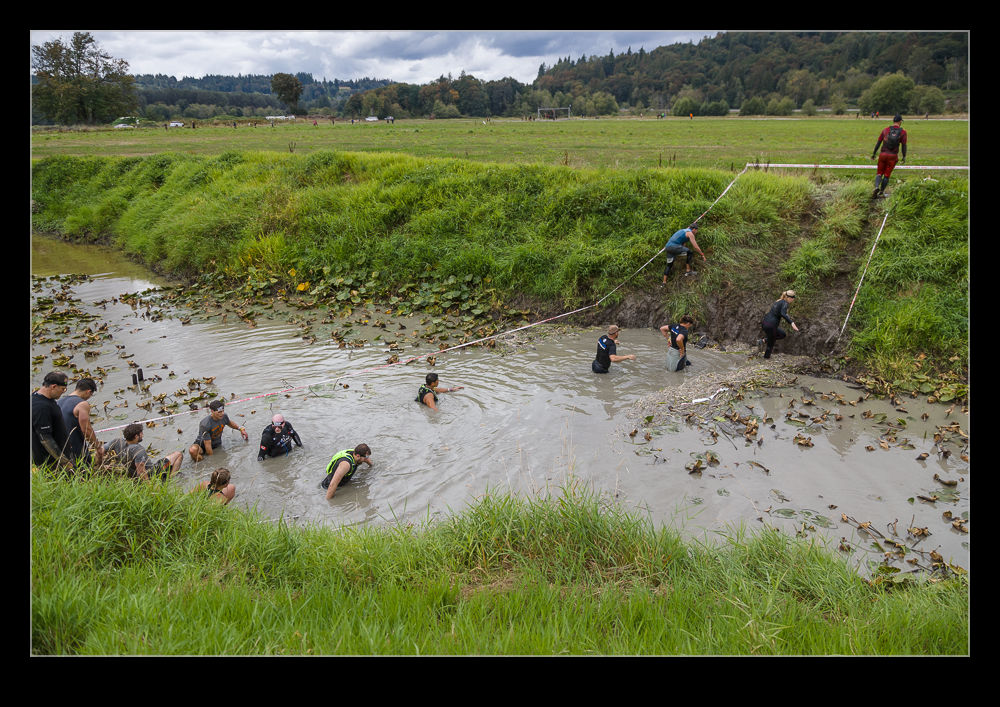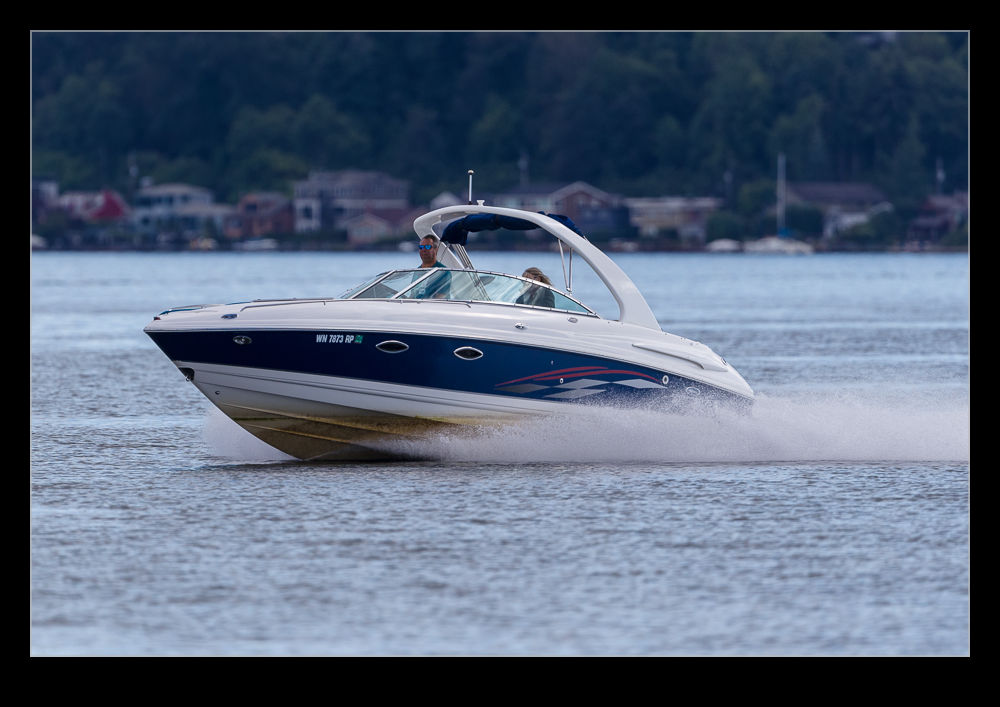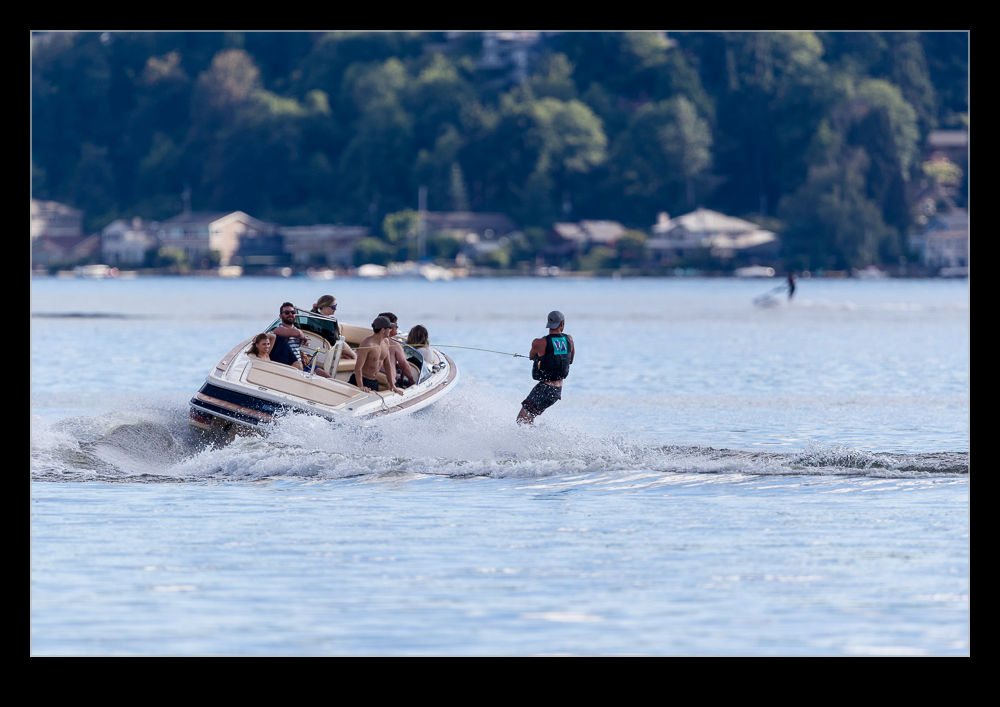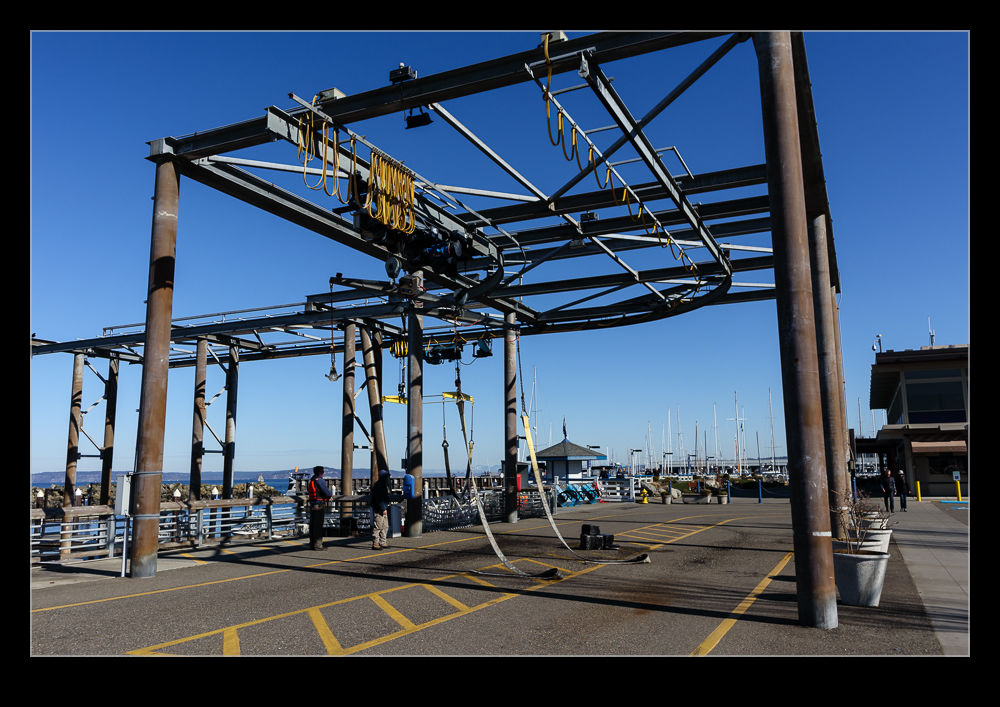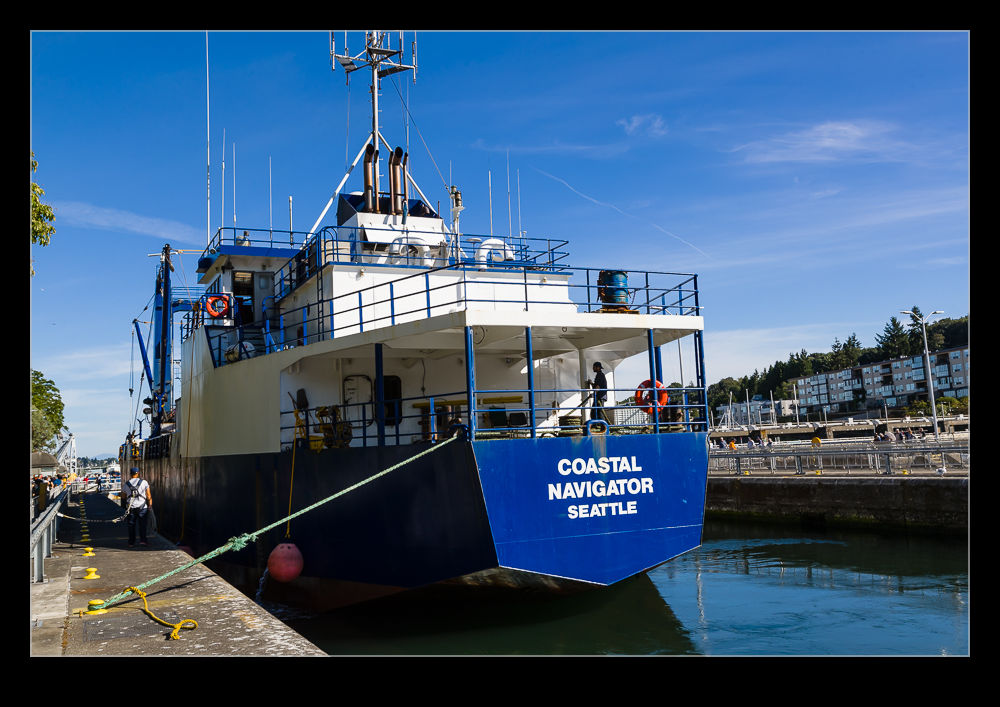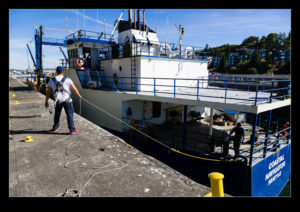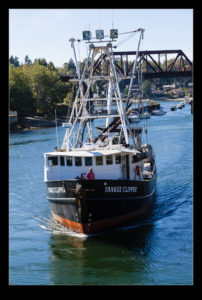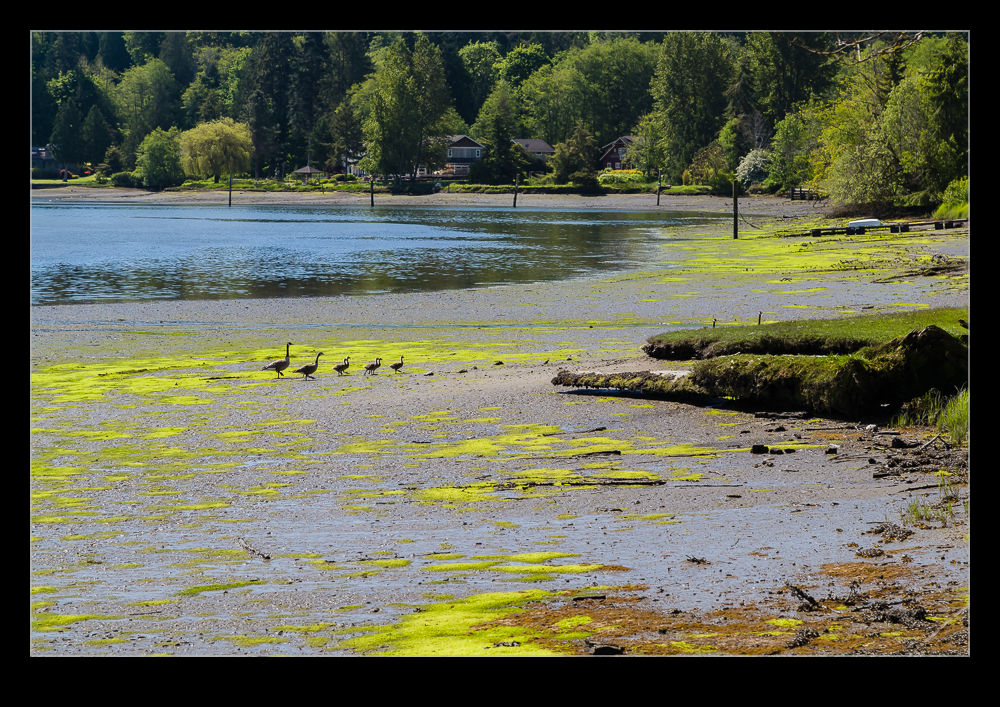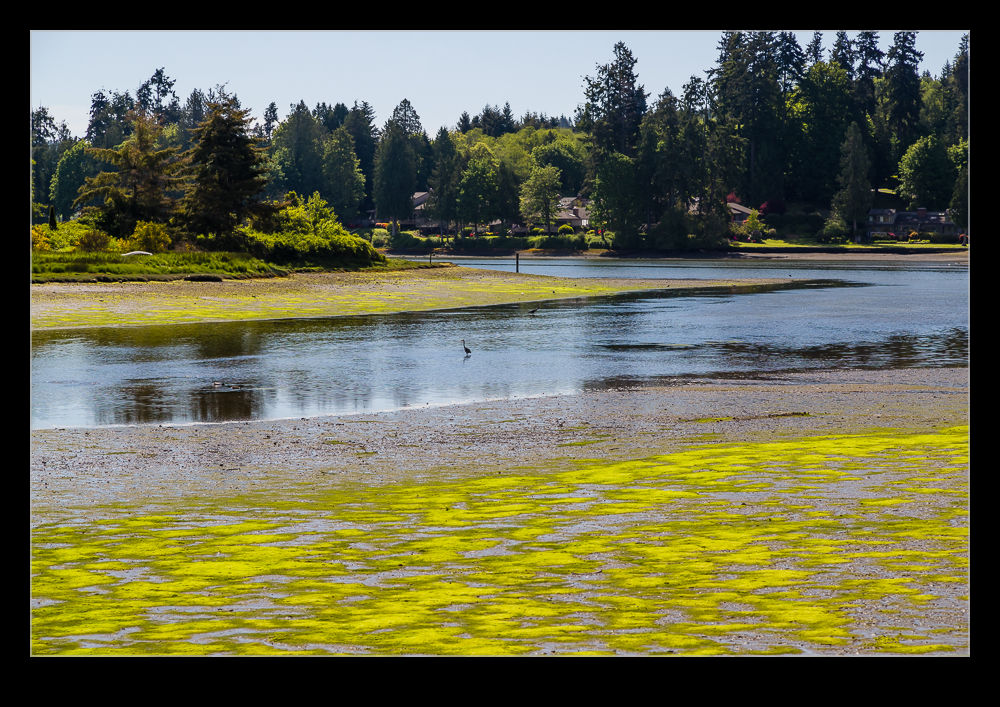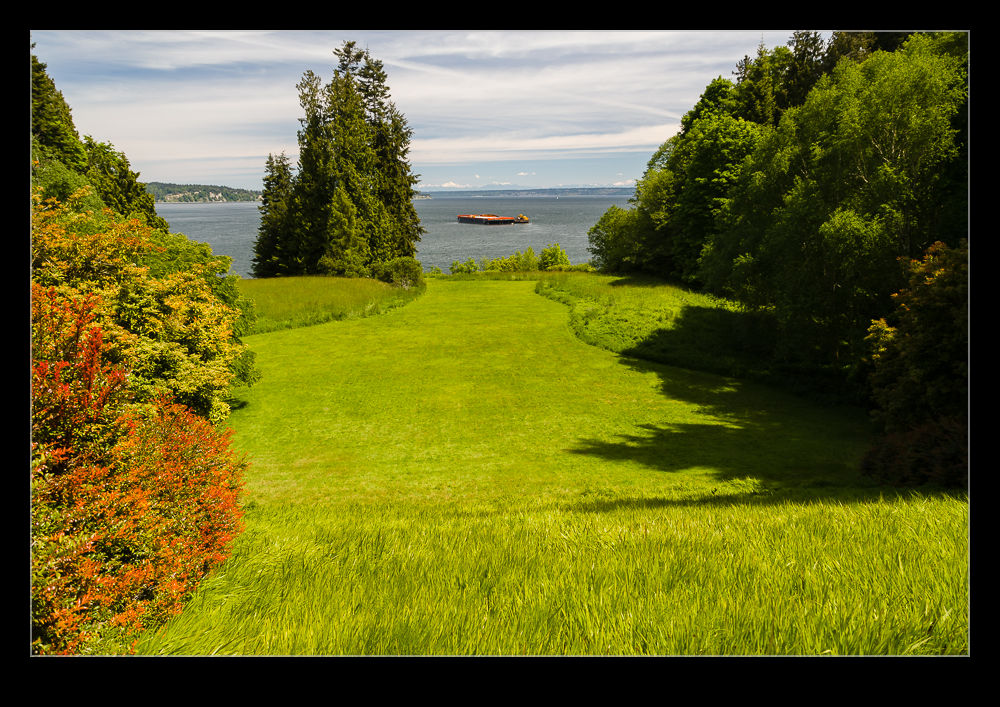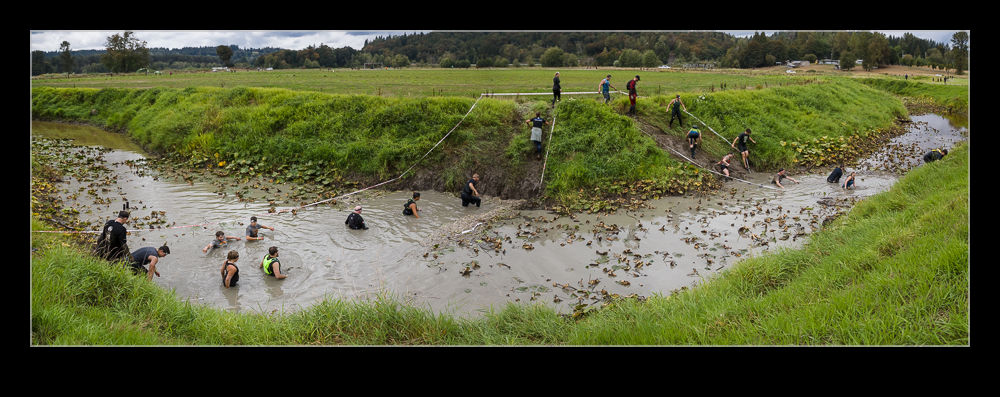 Two of the later obstacles in the Spartan Race involved water. The first was crossing a small river. It wasn’t too deep but the cold water on tired leg muscles was not nice. The banks were also getting very muddy and slippery given the number of contestants that had been before. Then there was a second water crossing. This was across and back the river with bank climbs on both sides. The water was also a lot deeper and the bottom of the river was uneven. Here people really struggled and the tiredness was really showing.
Two of the later obstacles in the Spartan Race involved water. The first was crossing a small river. It wasn’t too deep but the cold water on tired leg muscles was not nice. The banks were also getting very muddy and slippery given the number of contestants that had been before. Then there was a second water crossing. This was across and back the river with bank climbs on both sides. The water was also a lot deeper and the bottom of the river was uneven. Here people really struggled and the tiredness was really showing.
Tag Archives: water
Speed on the Lake
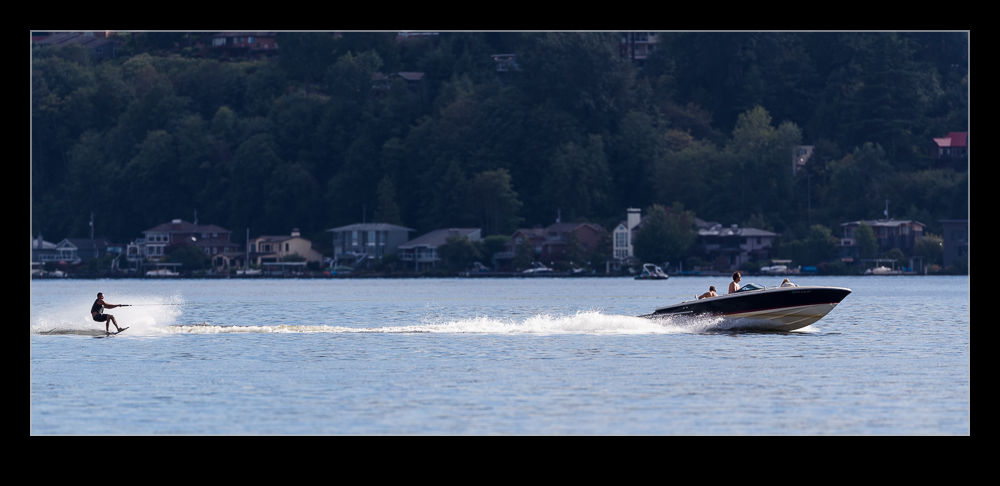 I have tried to find out what the rules are regarding how fast you can go on Lake Washington. All I have found so far is what limits there are when you are close to shore. Whether this means you can go as fast as you like while out in the open or not I don’t know. We do see plenty of people getting some speed up when they are out on the water. Whether it is speedboats of ski boats pulling someone behind them, they look nice and dramatic when they are up on the plane and moving.
I have tried to find out what the rules are regarding how fast you can go on Lake Washington. All I have found so far is what limits there are when you are close to shore. Whether this means you can go as fast as you like while out in the open or not I don’t know. We do see plenty of people getting some speed up when they are out on the water. Whether it is speedboats of ski boats pulling someone behind them, they look nice and dramatic when they are up on the plane and moving.
Jewels on the Leaves
Turbulence in the Channel
 When the bridge was built over Deception Pass, it provided a reliable method of crossing off Whidbey Island. Prior to the bridge, a boat was needed. I was there on a rough day – the weather was lovely – but the current running through the pass was pretty impressive. Watching the boats fight it made the flow very apparent. Closer to the shore, the current would churn up the water to create standing waves a short distance away from the beach. It looked like the sort of thing that could easily overwhelm a smaller craft if you didn’t know exactly what you were doing.
When the bridge was built over Deception Pass, it provided a reliable method of crossing off Whidbey Island. Prior to the bridge, a boat was needed. I was there on a rough day – the weather was lovely – but the current running through the pass was pretty impressive. Watching the boats fight it made the flow very apparent. Closer to the shore, the current would churn up the water to create standing waves a short distance away from the beach. It looked like the sort of thing that could easily overwhelm a smaller craft if you didn’t know exactly what you were doing.
Putting Your Boat in the Water
 While walking along the shore in Edmonds, we passed the marina and the loading area for the boats. They had a boat lift for the smaller boats to be taken off trailers and put in the water. A guy brought his boat along just as we got there so I had to watch the process. The two guys running the lifts clearly knew what they were doing but the guy insisted on explaining it all to them. They handled it with good grace.
While walking along the shore in Edmonds, we passed the marina and the loading area for the boats. They had a boat lift for the smaller boats to be taken off trailers and put in the water. A guy brought his boat along just as we got there so I had to watch the process. The two guys running the lifts clearly knew what they were doing but the guy insisted on explaining it all to them. They handled it with good grace.
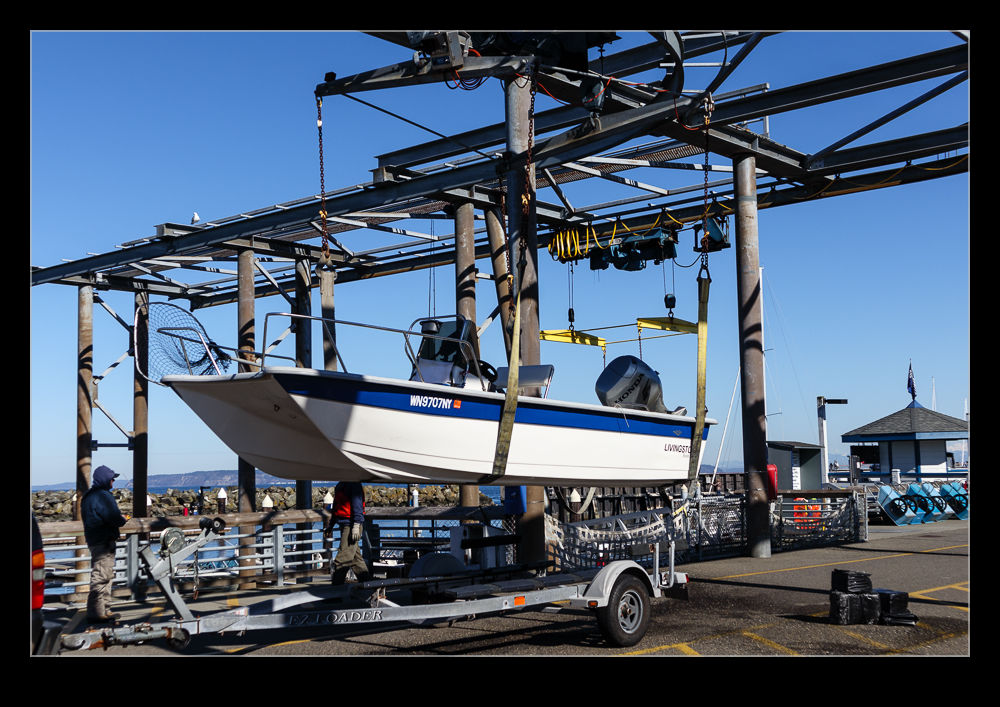 The lift had a track system that turned through ninety degrees. There were two lifts in parallel if the demand was there. The trailer was driven into position and the lifting straps were brought around. They were then passed under the boat and it was lifted up. Once it was clear of everything, the whole assembly motored along the rails, around the corner and out over the dock. It was then a simple process to lower it down into the water and then move it away.
The lift had a track system that turned through ninety degrees. There were two lifts in parallel if the demand was there. The trailer was driven into position and the lifting straps were brought around. They were then passed under the boat and it was lifted up. Once it was clear of everything, the whole assembly motored along the rails, around the corner and out over the dock. It was then a simple process to lower it down into the water and then move it away.
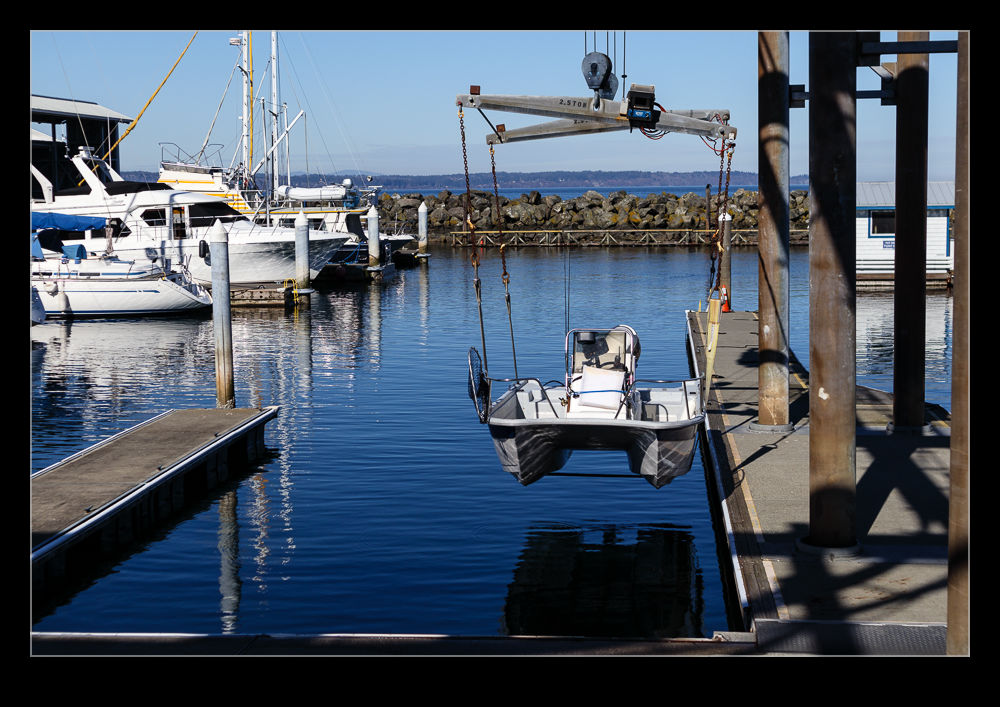 This was fine for boats of a certain size. If you wanted to put anything larger into the water, a far larger rig was required but that wasn’t needed while we were there so I didn’t get to watch it. In my younger days living in Cowes, I got to see those lifts at work a lot.
This was fine for boats of a certain size. If you wanted to put anything larger into the water, a far larger rig was required but that wasn’t needed while we were there so I didn’t get to watch it. In my younger days living in Cowes, I got to see those lifts at work a lot.
High Tide Through the Drains
The tide was very high when we got the parade in Cowes. The water level was just below the street level. Naturally, there was some swell, even though we were inside the harbor wall. This meant the water was pushing back up through the drains that normally take water from the street down to the sea. The water would force itself back up through the drains. Sometimes it was just a small amount of water but the bigger waves resulted in a bit more flow back out of the drain. Video is the best way to show this. The metal of the drain cover had the level of corrosion you would expect for something with this proximity to the sea!
The Commercial Craft Have Precedence
 I learned something new about boat traffic while at the locks in Ballard. There is a clear rule structure about which types of boats get precedence when traversing the locks. Priority goes to government boats and emergency services. Then scheduled commercial boats followed by unscheduled commercial boats before you start to get to the pleasure craft that make up a big chunk of the traffic. One of the boats had tried to enter the lock and they got a loud verbal warning that they had jumped the traffic lights and that a commercial craft was going ahead of them.
I learned something new about boat traffic while at the locks in Ballard. There is a clear rule structure about which types of boats get precedence when traversing the locks. Priority goes to government boats and emergency services. Then scheduled commercial boats followed by unscheduled commercial boats before you start to get to the pleasure craft that make up a big chunk of the traffic. One of the boats had tried to enter the lock and they got a loud verbal warning that they had jumped the traffic lights and that a commercial craft was going ahead of them.
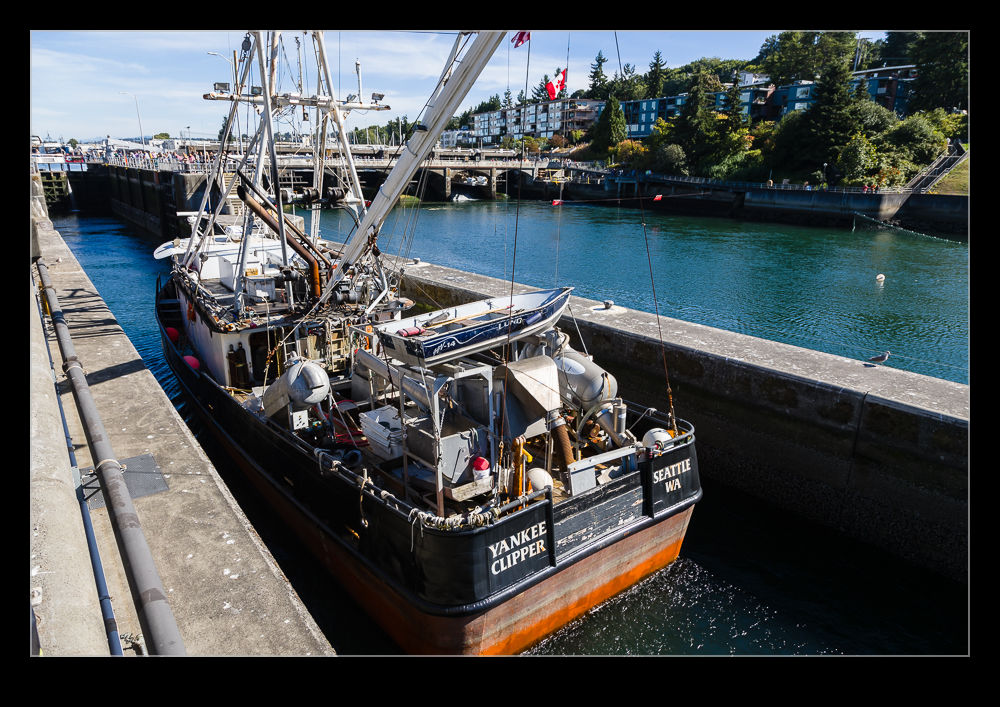 After hearing this, I chatted with one of the lock staff and he explained the way in which things are prioritized. The boat that first demonstrated this was a fishing vessel that went through the smaller lock and was a pretty snug fit (although the crew didn’t seem to even pause when running it in to the lock). The other commercial vessel that came in was substantially larger. It was directed to the main lock while the smaller traffic continued to use the smaller one. Seeing such large vessels come through and the change in perspective from when they were below you as they entered to being so much higher when they left was quite impressive.
After hearing this, I chatted with one of the lock staff and he explained the way in which things are prioritized. The boat that first demonstrated this was a fishing vessel that went through the smaller lock and was a pretty snug fit (although the crew didn’t seem to even pause when running it in to the lock). The other commercial vessel that came in was substantially larger. It was directed to the main lock while the smaller traffic continued to use the smaller one. Seeing such large vessels come through and the change in perspective from when they were below you as they entered to being so much higher when they left was quite impressive.
Hiram M Chittenden Locks
 Just north of the center of Seattle is Ballard. Aside from being an interesting area with shops, bars and restaurants, it is also home to a set of locks that connect the salt waters of Puget Sound with Lake Union and Lake Washington’s fresh waters. The locks are the busiest in the US with a steady stream of traffic. On the weekend, this is heavily dominated by pleasure craft but commercial vessels are also a big feature. Indeed, while we were there, we found out that there is a hierarchy of which types of vessel get to go through first, even if some of the owners of the small pleasure craft were not up to speed on the rules!
Just north of the center of Seattle is Ballard. Aside from being an interesting area with shops, bars and restaurants, it is also home to a set of locks that connect the salt waters of Puget Sound with Lake Union and Lake Washington’s fresh waters. The locks are the busiest in the US with a steady stream of traffic. On the weekend, this is heavily dominated by pleasure craft but commercial vessels are also a big feature. Indeed, while we were there, we found out that there is a hierarchy of which types of vessel get to go through first, even if some of the owners of the small pleasure craft were not up to speed on the rules!
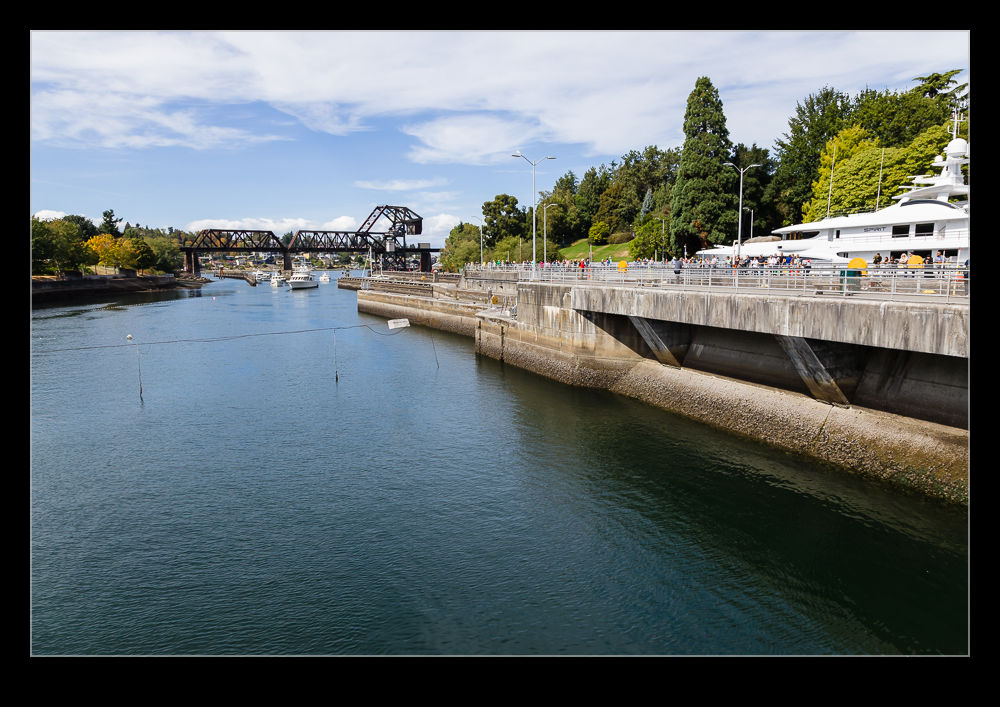 The locks are named after the man who was instrumental in the early phases of their construction. Aside from leading a big construction project, he also was quite visionary in other areas but that will be the topic of another post soon. There are actually two locks. One is a small lock that suits pleasure craft or small commercial vessels. The other is far broader and longer and can be operated with a middle set of gates if less vessels are coming through. It can also take a lot of smaller boats wedged together like a giant game of Tetris when demand is high such as is the case on warm holiday weekends.
The locks are named after the man who was instrumental in the early phases of their construction. Aside from leading a big construction project, he also was quite visionary in other areas but that will be the topic of another post soon. There are actually two locks. One is a small lock that suits pleasure craft or small commercial vessels. The other is far broader and longer and can be operated with a middle set of gates if less vessels are coming through. It can also take a lot of smaller boats wedged together like a giant game of Tetris when demand is high such as is the case on warm holiday weekends.
 The locks are open to the public along with a small botanic garden. You can cross over the top of the gates (although these are rather narrow and can get congested when people decide to stop and hang around rather than keep moving). There is plenty of space along the sides of the locks to watch the boats as they come in and as they rapidly rise or fall when the water levels are adjusted. We obviously weren’t the only ones to find it a relaxing spot to hang out for a while.
The locks are open to the public along with a small botanic garden. You can cross over the top of the gates (although these are rather narrow and can get congested when people decide to stop and hang around rather than keep moving). There is plenty of space along the sides of the locks to watch the boats as they come in and as they rapidly rise or fall when the water levels are adjusted. We obviously weren’t the only ones to find it a relaxing spot to hang out for a while.
Eagle Harbor
 As we drove across Bainbridge Island, we took a road that passed by a very attractive inlet. This was Eagle Harbor. At the time, I only appreciated it at the last moment and we were already passed. However, we did come back along the same road so, this time I slowed down and found a place to pull in and look around. It was a tranquil spot to hang out for a few minutes. However, we were heading to other places so I didn’t stay to appreciate it for long.
As we drove across Bainbridge Island, we took a road that passed by a very attractive inlet. This was Eagle Harbor. At the time, I only appreciated it at the last moment and we were already passed. However, we did come back along the same road so, this time I slowed down and found a place to pull in and look around. It was a tranquil spot to hang out for a few minutes. However, we were heading to other places so I didn’t stay to appreciate it for long.
What a Great View of the Sound!
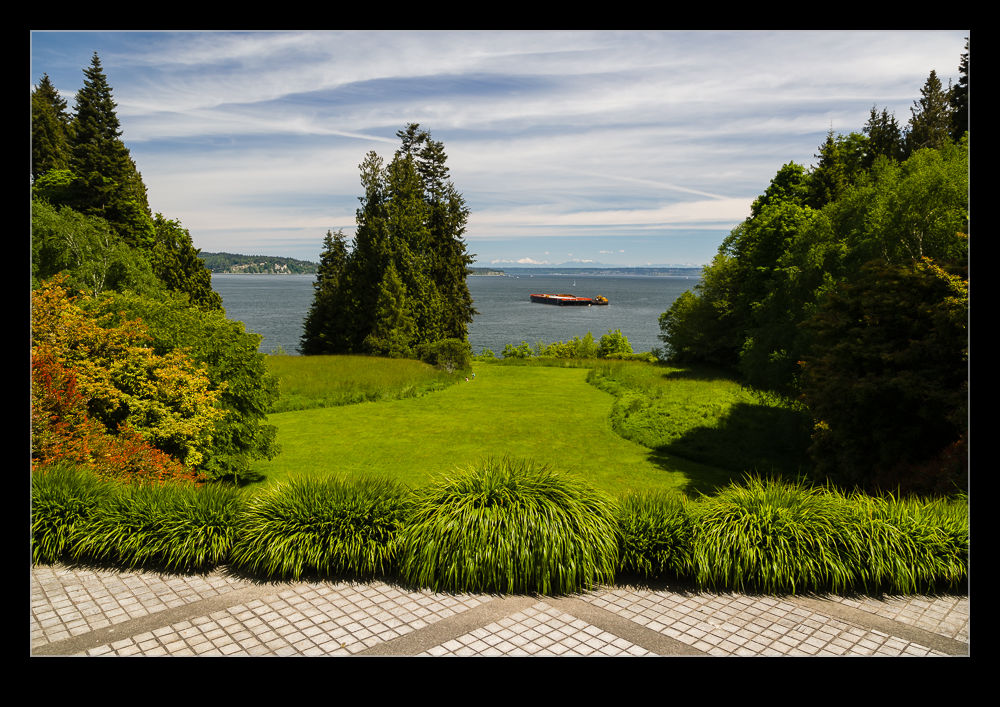 The house at Bloedel Reserve sits up on the hill with the grounds landscaped to provide an unobstructed view down to the sound below. You can imagine the tranquility of sitting on the terrace in the evening, sipping a cocktail and looking out at the water. Unfortunately, at the time of our visit, a large barge was moored a short distance out in the water. I’m sure the view is beautiful but, with a barge plonked in the middle of things, somehow the delightful nature of the scene is a little compromised!
The house at Bloedel Reserve sits up on the hill with the grounds landscaped to provide an unobstructed view down to the sound below. You can imagine the tranquility of sitting on the terrace in the evening, sipping a cocktail and looking out at the water. Unfortunately, at the time of our visit, a large barge was moored a short distance out in the water. I’m sure the view is beautiful but, with a barge plonked in the middle of things, somehow the delightful nature of the scene is a little compromised!
